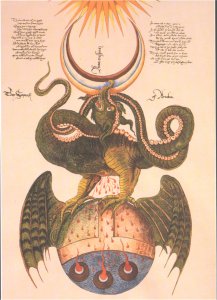I’ve been taking a small break from the Fragrant blending experiments to mix up “Alchemy,” the alcohol-based perfume from Mandy Aftel’s earlier book, Essence & Alchemy. Last week I mixed up the required amber accord and then the base accord. Then yesterday I added the heart and top notes. Even though I haven’t let it mature AT ALL, this is a fun, easy-to-love perfume modeled on the classical amber base-floral heart-citrus top notes model. Here’s what you need to do the job:
Raw Materials*
- Base accord in perfumer’s alcohol (vanilla, benzoin, and a few drops of the amber accord)
- Rose absolute
- Jasmine absolute
- Ylang Ylang Extra essential oil
- Bergamot essential oil
- Bitter orange essential oil
- Black pepper essential oil
*Out of courtesy to the author, I’m leaving off the amounts of each raw material. You can find them in her book.
Equipment
- Glass eyedroppers (1 per essence)
- Small glass of rubbing alcohol for cleaning eye droppers (place them in it upright after use)
- 1 oz dark glass bottle (already containing the base accord – you will add the heart and top notes to it)
- Paper towels
Steps
- Cover your work surface with paper towels.
- Add the essences to the bottle that already contains the base. Use a separate eye dropper for each essence.
- When you are done with an eye dropper, place it in the glass of rubbing alcohol, and pump it a few times to clean it, and leave it sitting full of alcohol.
- Cap the bottle tightly and shake it to be sure all the ingredients are well mixed. Label it, and store it in a cool, dark place.
- Let the blend mature from a week to a month to let the essences marry and create a smooth blend. Finis!
How did it work? How does it smell?
Sweet amber-jasmine deliciousness! The bergamot and bitter orange give it a zippy, fruity bounce – but what really shines through is the beautiful jasmine, supported by the ylang ylang and rose. The vanilla-benzoin-amber base gives it sweet base that is dense and practically lickable. Yum! This reminds me of something….What is it? I’ve smelled other classical perfumes like this before, but for the moment they are escaping me. This smells a little retro – fleetingly like a Chanel… No. 5 or one of its family members? – but without any of the aldehydes and angular modern art business. It’s probably the rose-jasmine heart that is common to so many of the greats. This smells simultaneously fresher and denser (if that’s possible) than the more synthetic classics.
I wonder how it will smell when it’s aged a month?
Notes on Notes
- Rosa damascena absolute, Turkey, White Lotus Aromatics – Rose, honeyed, sweet, soft, med/low intensity, pretty, more vegetable than jasmine, more rooty
- Jasmine absolute, grandiflorum, India, Eden Botanicals – jasmine, SWEET, narcotic, rich, seductive, round, white floral
- Ylang Ylang Extra EO, Organic, Comoros, White Lotus Aromatics – harsher than jasmine, sweet white floral, much lower intensity than jasmine with sharp, almost woody top, thinner than jasmine
- Bergamot EO, Organic, Italy, White Lotus Aromatics – citrus, green, sharp, peppery, light
- Bitter Orange EO, Dominican, Liberty Naturals – citrus, orange, tart – like this
- Black Pepper EO, Sri Lanka, Organic, White Lotus Aromatics – pepper, phenolic?, eye watering, hot, thin, edge, woody
The top notes link one to the next nicely. Sharpness of the Ylang leads in to the green citrus? My skin seems to exaggerate the sour, sharp aspects of the rose – at least it did at first, while blending, but did not later – even after the blend only matured a day.

